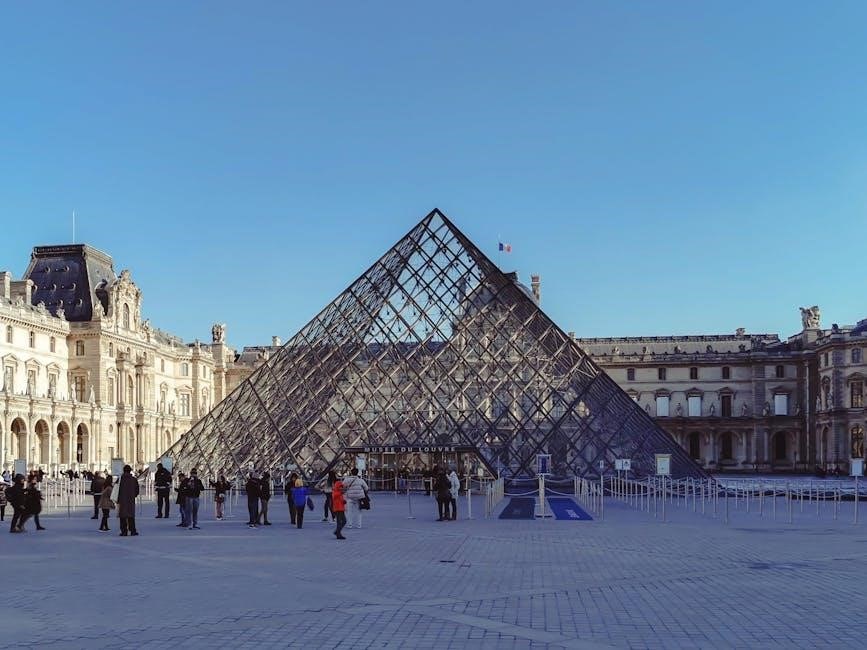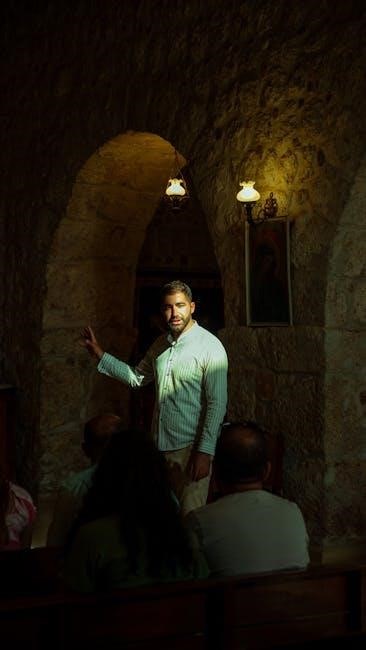tour du mont blanc guided tour
Overview of the Tour du Mont Blanc Guided Tour
The Tour du Mont Blanc is a renowned 170km hiking trail circling Mont Blanc, the highest peak in the Alps, spanning France, Italy, and Switzerland. This guided tour offers a unique opportunity to explore stunning alpine landscapes, high-altitude passes, and picturesque villages with expert guidance, ensuring safety and enhancing the hiking experience.
The Tour du Mont Blanc (TMB) is one of the most prestigious long-distance hikes in the world, offering a 170km circuit around Mont Blanc, the highest peak in the Alps. Spanning France, Italy, and Switzerland, this iconic trail showcases breathtaking alpine landscapes, from lush valleys to towering glaciers. Hikers experience a diverse range of terrains, including high-altitude passes, quaint mountain villages, and stunning meadows. The TMB is a challenging yet rewarding adventure, attracting both seasoned trekkers and those new to long-distance hiking. Its route provides unparalleled views of Mont Blanc from multiple perspectives, making it a must-do for outdoor enthusiasts.
1.2 The Significance of a Guided Tour
A guided Tour du Mont Blanc tour enhances the hiking experience through expert leadership, ensuring safety and providing insights into the region’s history and culture. Guides offer valuable knowledge about the terrain, weather conditions, and trail navigation, minimizing risks and maximizing enjoyment. They also facilitate access to local accommodations and dining, enriching the journey. For those unfamiliar with high-altitude trekking, guided tours provide reassurance and support, allowing hikers to focus on the stunning scenery and unforgettable experiences. This support system is particularly beneficial for navigating challenging sections and makes the adventure accessible to a broader range of participants.
Planning and Preparation for the Tour

Planning the Tour du Mont Blanc requires careful preparation, including physical conditioning, understanding the route, and arranging accommodations. Proper gear and logistics ensure a smooth experience.
2.1 Best Time to Hike the Tour du Mont Blanc
The optimal time to hike the Tour du Mont Blanc is from mid-June to mid-September, when weather conditions are favorable and trails are clear of snow. During this period, the high-altitude routes are accessible, and the scenery is at its most breathtaking. July and August are the busiest months, while June and September offer a more serene experience. It’s crucial to avoid hiking during heavy snowfall or icy conditions, as they can make the trails hazardous. Additionally, the popular TMB Ultra Trail event in late August attracts many runners, so hikers should plan accordingly to avoid crowds.
2.2 Necessary Permits and Documentation
Hiking the Tour du Mont Blanc does not require a specific permit for the standard route, but certain sections, like the Durier Trail, may need authorization. Ensure you carry valid identification, such as a passport, as the trail crosses international borders. If hiring a guide, they typically handle logistical arrangements. For self-guided hikers, it’s essential to research local regulations and obtain any necessary permits for deviations from the main path. Additionally, always carry travel insurance documents and inform someone of your itinerary. Proper preparation ensures a smooth and enjoyable experience on this iconic trail.
2.3 Packing Essentials for the Hike
Packing appropriately is crucial for the Tour du Mont Blanc. Hikers should bring sturdy, waterproof hiking boots, breathable layers, and a waterproof jacket. Navigation tools like a map and GPS are essential. A first-aid kit, headlamp, and trekking poles are recommended. Carry a lightweight backpack with snacks, water, and a water filter or purification tablets. Extra clothing, including a warm hat and gloves, is necessary for varying weather conditions. Don’t forget sunscreen, sunglasses, and a camera to capture stunning views. Packing light yet smartly ensures a comfortable and enjoyable journey through the Alps.

The Guided Tour Experience
The guided tour offers expert leadership, enhancing safety and enjoyment. Guides provide historical insights, manage logistics, and ensure a memorable experience tailored to group needs and pace.
3.1 The Role of Experienced Guides
Experienced guides are crucial on the Tour du Mont Blanc, offering expert navigation, safety, and knowledge of the trail. They manage group dynamics, provide cultural insights, and handle emergencies, ensuring a smooth and enriching experience for all participants.
3.2 Benefits of a Guided Tour
A guided Tour du Mont Blanc offers numerous advantages, enhancing the hiking experience. Expert guides provide invaluable insights into the region’s culture, history, and wildlife, while ensuring safety and navigation. They handle logistics, such as accommodations and transfers, allowing hikers to focus on the trail. Guides also offer personalized support, adapting the pace to suit group needs and providing motivation. Additionally, their local knowledge reveals hidden gems and scenic viewpoints, enriching the journey. The camaraderie within the group, fostered by shared experiences, further elevates the adventure, making a guided tour a comprehensive and unforgettable experience.
3.3 Group Sizes and Dynamics
Guided Tour du Mont Blanc groups are typically small, ranging from 6 to 12 hikers, ensuring personalized attention and a cohesive experience. This size fosters camaraderie, as participants share challenges and triumphs, creating lasting bonds. Guides expertly manage group dynamics, balancing diverse fitness levels and interests while maintaining a positive atmosphere. The collective energy motivates hikers, especially during demanding sections, and shared experiences enhance the adventure. Small groups also allow for flexibility, enabling guides to adapt the pace and route based on the team’s needs, ensuring everyone enjoys a fulfilling and memorable journey through the Alps.
The Route and Itinerary
The Tour du Mont Blanc is a 170km circuit around Mont Blanc, spanning France, Italy, and Switzerland. Starting in Les Houches and ending in Chamonix, it typically takes 7-10 days to complete, offering breathtaking views and challenging terrain.
4.1 Detailed Daily Itinerary
A typical Tour du Mont Blanc guided tour spans 7-10 days, covering approximately 170km. Day 1 begins in Les Houches, hiking to Trient (6hrs), with stunning mountain views. Day 2 leads to Champex (6hrs), transferring to La Fouly. Day 3 involves crossing the Grand Col Ferret into Switzerland. Day 4 explores the Val Ferret, heading to Planpincieux. Day 5 crosses into Italy, reaching Courmayeur. Day 6 traverses the Val Veny to Lac Combal. Day 7 returns to France via the Col de la Seigne. The final days complete the circuit back to Chamonix, offering breathtaking alpine landscapes throughout.
4.2 Key Sections of the Route
The Tour du Mont Blanc route features several iconic sections, each offering unique landscapes and challenges. The Grand Col Ferret marks the border between Switzerland and Italy, while the Val Ferret valley provides serene alpine meadows. The ascent to Courmayeur via the Mont de la Saxe ridge offers breathtaking views of the Mont Blanc massif. The Col de la Seigne is another highlight, connecting Italy to France with dramatic vistas. These sections, along with the challenging yet rewarding trails like the Sentier du Balcon du Mont-Blanc, make the TMB a diverse and unforgettable hiking experience, blending high-altitude passes with picturesque valleys.
4.3 Accommodation Options
The Tour du Mont Blanc offers a variety of accommodation options to suit different preferences and budgets. Mountain refuges and guesthouses provide cozy, rustic stays with breathtaking views, while hotels in villages like Chamonix, Courmayeur, and Les Houches offer more comfort and amenities. Many guided tours include luggage transfers, allowing hikers to carry only essentials during the day. Accommodations are strategically located along the route, ensuring a restful stay after each day’s hike. Advance booking is recommended, especially during peak season, to secure preferred options and ensure a seamless experience throughout the journey.

Highlights and Attractions
The Tour du Mont Blanc offers breathtaking alpine landscapes, cultural encounters, and diverse perspectives of Mont Blanc from France, Italy, and Switzerland, making it a hiker’s paradise.
5.1 Scenic Views and Landmarks
The Tour du Mont Blanc guided tour captivates hikers with its breathtaking alpine vistas, including the iconic Aiguille du Midi and Mer de Glace. The trail offers panoramic views of glaciers, high-altitude meadows, and towering peaks. Hikers marvel at the stunning landscapes of Mont Blanc, the highest summit in the Alps, and explore picturesque villages nestled in the mountains. The route also features landmarks like the Vieux-Emosson dam and the Sentier du Balcon du Mont-Blanc, providing diverse and awe-inspiring scenery throughout the journey. These natural wonders create an unforgettable experience for those exploring this iconic trail.
5.2 Cultural Experiences Along the Route

The Tour du Mont Blanc guided tour offers rich cultural experiences, allowing hikers to immerse themselves in the traditions of France, Italy, and Switzerland. Along the route, visitors can explore charming Alpine villages, interact with local communities, and enjoy regional cuisine. Historical sites, such as ancient mountain refuges and traditional cheese barns, provide insights into the region’s heritage. The tour also offers opportunities to engage with local customs, festivals, and artisanal practices, creating a unique blend of natural beauty and cultural enrichment. These experiences add depth to the hiking adventure, making the journey as culturally rewarding as it is visually stunning.
5.3 Wildlife and Nature Encounters
The Tour du Mont Blanc guided tour offers unparalleled opportunities to connect with nature and wildlife. Hikers can spot iconic Alpine species such as ibex, chamois, and marmots in their natural habitats. The trail winds through diverse ecosystems, including alpine meadows and forests, where rare flora like edelweiss thrive. Birdwatchers can enjoy sightings of eagles and vultures soaring overhead. The pristine landscapes, with their glaciers, waterfalls, and mountain lakes, create a breathtaking backdrop for wildlife encounters. These experiences allow hikers to appreciate the region’s rich biodiversity and the delicate balance of its alpine ecosystems.
The Tour du Mont Blanc guided tour is an unforgettable adventure that offers breathtaking alpine landscapes, cultural richness, and a sense of achievement. Hikers traverse 170km through France, Italy, and Switzerland, experiencing high-altitude trails, picturesque villages, and diverse wildlife. With expert guides, participants gain insights into the region’s history, flora, and fauna. The tour caters to both experienced hikers and those seeking a challenging yet supported journey. It is a testament to nature’s beauty and human resilience, leaving participants with lifelong memories and a deep connection to the Alps.